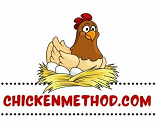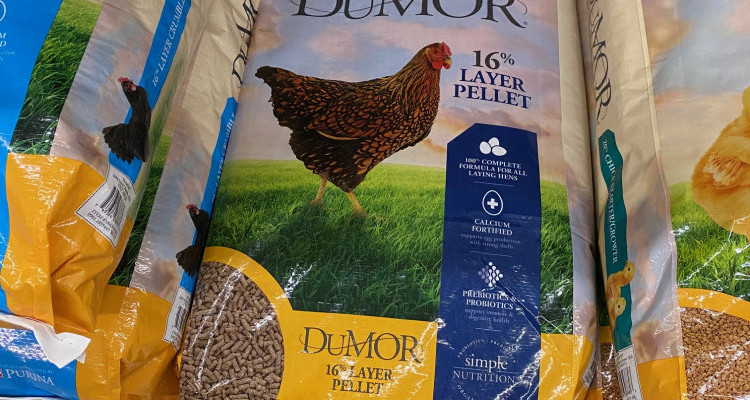As a seasoned chicken raiser, I’m here to tell you that providing the right feed for your backyard flock doesn’t have to break the bank. Let’s explore the world of affordable chicken feed options and how to navigate them.
Understanding Chicken Feed
Why Proper Chicken Feed Matters
Your chickens’ diet plays a crucial role in their overall health and productivity, influencing factors such as growth, egg production, and immunity. Key nutrients like proteins, vitamins, and minerals are essential for their well-being.
Different Types of Feed
There are primarily three types of feed:
Starter Feed: The primary goal of starter feed is to promote healthy growth and development in the early stages of a chick’s life. Starter feeds are typically used until the chick is around 6-8 weeks old, at which point they can be transitioned to a grower feed.
- High Protein Content: Starter feed often has a high protein content, usually around 18-20%. This is essential for fast-growing chicks as protein helps build their body tissues.
- Medicated or Non-Medicated: Some starter feeds are medicated, typically with a coccidiostat, which is a type of medication used to prevent coccidiosis, a common intestinal disease in chickens. Non-medicated feeds are also available if you prefer not to use medicated feeds.
- Form: Starter feed comes in different forms including mash, crumbles, and pellets. For baby chicks, the feed is usually provided as a mash or crumble because it’s easier for them to eat. Pellets are typically too large for baby chicks.
- Minerals and Vitamins: It’s important that the feed contains a good balance of essential minerals and vitamins. Calcium, phosphorous, and vitamin D are especially important for developing strong bones.
- Amino Acids: Amino acids such as lysine and methionine are also important for the growth and development of chicks.
Grower Feed: …typically used from when the chicks are around 6-8 weeks old until they are about 16-20 weeks old, or until they start laying eggs. This type of feed is formulated to continue supporting the growth and development of chickens during their adolescence.
- Protein Content: Grower feed has a slightly lower protein content compared to starter feed, typically around 15-18%. The protein is still important for growth, but as the chicks are now older and growing less rapidly, their protein requirements are lower.
- Minerals and Vitamins: Like starter feed, grower feed also contains a balanced amount of vitamins and minerals, such as calcium and phosphorus, which are necessary for bone development and overall health. However, the levels of some nutrients, particularly calcium, are lower than they will be in layer feed, as high calcium levels are not needed until the hens start laying eggs.
- Form: Grower feed comes in both crumbles and pellets. Pellets are often introduced at this stage, as the larger size encourages slower, more deliberate eating, which can help to reduce waste.
- Non-Medicated: Most grower feeds are non-medicated. However, if your chickens are at high risk of disease, there may be medicated options available.
- Energy Content: Grower feeds have a balanced energy content to support the active lifestyle of growing chickens without promoting too much weight gain, which could lead to health problems.
- Amino Acids: Essential amino acids such as methionine and lysine are included in the right proportions to support continued growth and feather development.
Layer Feed: …given to chickens when they reach maturity and start laying eggs, typically around 16-20 weeks of age, although the exact age can vary depending on the breed. The primary function of layer feed is to provide the nutrients needed for consistent and healthy egg production.
- Calcium Content: Layer feed has a higher calcium content than either starter or grower feed, usually between 3-4%. This is because laying hens need a lot of calcium to produce eggshells. Without enough calcium in their diet, hens can start to draw the necessary calcium from their own bones, which can lead to serious health problems.
- Protein Content: The protein content of layer feed is usually around 16-18%. While this is less than in starter feed, it’s still crucial for maintaining the health and productivity of the hens.
- Vitamins and Minerals: Like the other types of feed, layer feed contains a balance of necessary vitamins and minerals. Vitamins A, D, and E are particularly important for laying hens, as well as the mineral phosphorus.
- Form: Layer feed is typically offered in pellet form, which is easier for adult chickens to eat and reduces waste.
- Energy Content: The energy content in layer feeds is adequate to maintain the bird’s body condition and support the energy needs for egg production.
- Amino Acids: Essential amino acids, such as methionine, are present in layer feeds to support egg production and feather maintenance.
- Non-Medicated: Layer feeds are generally non-medicated since the hens should be healthy and robust by this point. However, if specific health issues arise, there may be medicated options available.
Factors to Consider When Choosing Chicken Feed
Age of Chickens
The age of your chickens determines the type of feed they need. As mentioned earlier, chicks require Starter Feed, transitioning to Grower and then Layer Feed as they mature.
Purpose of Raising Chickens
For egg-laying hens, calcium-rich feed is crucial for producing strong eggshells. On the other hand, meat chickens (broilers) benefit more from protein-heavy feed.
Seasonal Changes
Seasons can affect the amount and type of feed. In colder months, chickens require more energy and thus need a slightly richer diet.
Affordable Chicken Feed Options
Commercial Feeds
Numerous cost-effective methods of feed production can be found at Murano Chicken Farm.
Making Your Chicken Feed
Creating a homemade feed mix can be economical and allows you control over the ingredients. A simple recipe might include grains like corn and wheat, protein sources such as peas or lentils, and a calcium supplement.
Foraging and Free-ranging
Allowing your chickens to free-range and forage naturally reduces feed costs. They can supplement their diet with bugs, grass, and other natural goodies.
Saving Money on Chicken Feed
Buying in Bulk
Purchasing feed in larger quantities often comes at a discount, which can result in significant savings over time.
Minimizing Waste
Proper storage and controlled feeding practices can help prevent wastage. For instance, using feeders that discourage scratching and spilling can be a great help.
Using Kitchen Scraps
Leftover fruits, vegetables, and grains from your kitchen can supplement your chickens’ diet, cutting down feed costs.
Precautions When Opting for Affordable Options
While exploring affordable chicken feed options, ensure not to compromise on nutrition. Some kitchen scraps (like onions, chocolate, and avocado) can be harmful to chickens. Also, low-quality feed may save you a few bucks upfront but might cost you more in vet bills down the line. Be sure to check the labels.
As you can see, there are several affordable chicken feed options to consider. Balancing cost-effectiveness with nutritional value is key. So, don’t be afraid to experiment and find the best solution for your backyard flock. Happy chicken raising!
Remember, the goal is to keep your chickens healthy while keeping your wallet happy. That’s what I call a win-win!
Dave
Chickenmethod.com


